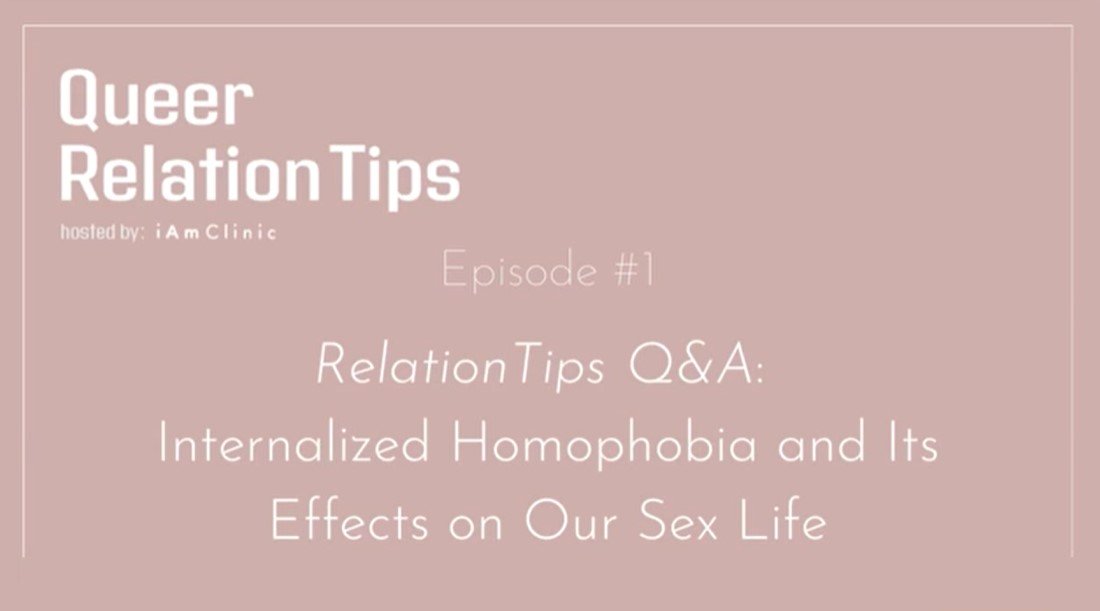Table Of Contents
- Liberating Love: Embrace Sexuality and Overcome Internalized Homophobia
- The Weight of Sexual Shame
- Navigating Queer Identity and Religion
- Intimacy and Vulnerability in Relationships
- Unpacking Internalized Homophobia
- Rewriting The Narrative Of Sexuality
- Reclaiming Pleasure Through Self-Exploration:
- Empathy and Solidarity
- Conclusion
Episode Summary
Host Isaac Archuleta and his guest explore the complexities that happen when our learned shame and internalized homophobia affects our ability to have and enjoy sex with our partner and pleasure ourselves.
Some of the episodes in our line up are what we call, RelationTips Q&A’s, a safe space for everyday folks to come on the show and talk with a therapist about a problem or topic they are struggling with.
These episodes are intended to highlight queer stories with the hope that others can relate and gain insight into their own journeys.
Guests on these episodes bring vulnerability into the space that allows for a deep, emotional exploration of areas that hit deeply for many queer folks.
For information about how to become a guest, visit us at iAmClinic.org.
Liberating Love: Embracing Sexuality and Overcoming Internalized Homophobia
Sexuality and identity are integral parts of the human experience, but for many queer individuals, they can also be sources of shame and internal conflict. This blog explores the journey of a young queer person navigating the complexities of sexual shame and internalized homophobia while trying to embrace their true self. We will delve into the impact of religious upbringing on their self-perception, the struggles faced in intimate relationships, and the path towards redefining sexuality as a sacred and beautiful expression of love.
The Weight of Sexual Shame:
For individuals raised in conservative religious communities, the messages surrounding sexuality can be deeply damaging. Many queer people are taught that their desires are sinful and deviant, leading to feelings of guilt and shame. The blog begins by acknowledging the emotional and physical impact of internalized homophobia, as the protagonist describes the tightness in their stomach and shallow breathing that accompanies feelings of shame.
Growing up in a religious household, the protagonist recalls feeling a profound disconnection between their sexual desires and the values instilled by their faith. They wrestle with the idea that their queerness is at odds with their spiritual beliefs, leading to an internal struggle between their authentic self and the desire to fit into their community’s expectations.
Navigating Queer Identity and Religion:
The protagonist shares their journey of reconciling their queer identity with their religious upbringing. They express how their spiritual beliefs helped them accept their non-binary identity, but the condemnation of their sexual desires still lingered. We explore the concept of purity culture and how it perpetuates harmful beliefs about sexual expression within the LGBTQ+ community.
This section delves into the emotional turmoil the protagonist faced when trying to harmonize their faith and sexuality. They recall moments of prayer and seeking guidance, grappling with a sense of unworthiness and confusion. However, it also highlights moments of solace and self-discovery when they began to understand that spirituality and queerness were not inherently contradictory.
Intimacy and Vulnerability in Relationships:
The protagonist opens up about the challenges faced in their romantic relationship with a genderqueer partner. They discuss how internalized homophobia affects their ability to initiate intimacy, leading to a fear of rejection and feelings of inadequacy. Their partner, coming from a different background, struggles to empathize with their emotional turmoil during intimate moments.
In this section, the protagonist bravely shares their struggles with vulnerability in romantic relationships. The fear of rejection based on past experiences of shame often prevents them from fully expressing themselves and embracing intimacy. Their partner’s frustration comes from a place of not fully comprehending the depth of internalized homophobia, leading to communication barriers that further complicate the relationship.
Unpacking Internalized Homophobia:
In this section, we delve deeper into the nature of internalized homophobia as a pervasive emotional experience rather than a cognitive narrative. The blog explores how the process of internalizing homophobic messages begins during childhood and continues into adulthood, leaving deep scars on one’s self-worth.
The protagonist reflects on the messages they absorbed throughout their life, from media portrayals to interactions with peers and family. These messages reinforced the idea that their queerness was shameful, leading to an internalization of prejudice and negative self-perception.
Rewriting the Narrative of Sexuality:
The protagonist shares their newfound understanding of sexual orientation as a guide towards emotional connections that teach us we are worthy of love. This perspective helps them see sex as an expression of love and intimacy rather than a sinful act. They express a desire to shift their emotional experience during sex from one of shame and guilt to one of peace and restfulness.
By challenging societal norms and questioning the religious teachings that stigmatize LGBTQ+ individuals, the protagonist embarks on a journey of self-discovery and self-acceptance. They recognize that their queerness is a beautiful aspect of their identity, deserving of love and respect.
Reclaiming Pleasure Through Self-Exploration:
The blog discusses the process of reclaiming pleasure and intimacy through masturbation. The protagonist admits to struggling with achieving orgasm on their own due to feeling disconnected from their body. They express a willingness to practice this new emotional approach during solo moments to rewire their autonomic nervous system and rewrite the narrative of pleasure.
Through self-exploration, the protagonist aims to establish a more profound connection with their body and desires. By unlearning shame and embracing their sexuality, they aspire to foster a healthier relationship with pleasure and sexual fulfillment.
Empathy and Solidarity:
The blog concludes with a powerful message of empathy and solidarity for all those struggling with internalized homophobia. The protagonist acknowledges their own journey and extends compassion to others who might be facing similar struggles. They express hope for a future where all queer individuals can embrace their sexuality without shame or fear.
Conclusion:
Liberating oneself from the grips of internalized homophobia is a challenging and deeply personal journey. It requires acknowledging the emotional and physical toll it takes, and then actively working to rewrite the narrative around sexuality and identity. By understanding that sexual desires are not sinful but a beautiful expression of love, individuals can pave the way towards self-acceptance, empowerment, and genuine intimacy. This blog serves as a testament to the resilience and strength of the human spirit in the face of societal pressures and self-doubt, reminding us that love, in all its forms, should always be celebrated and cherished.







